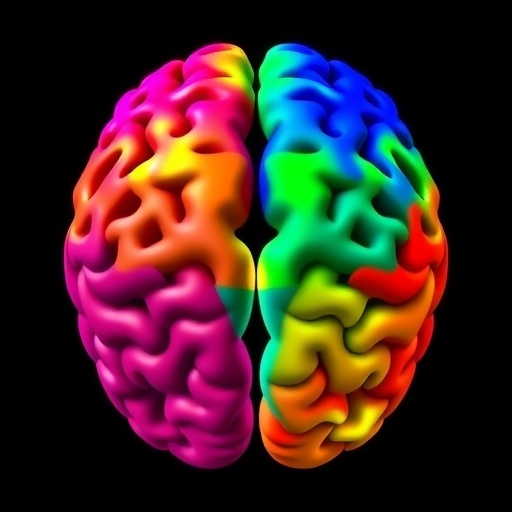In a groundbreaking advancement in psychiatric neuroscience, a recent study published in Translational Psychiatry delves into the intricate landscape of gene expression variations within the striatum of individuals with psychosis, revealing compelling sex and regional discrepancies. This research offers unprecedented insight into the molecular underpinnings of psychotic disorders, potentially reshaping diagnostic and therapeutic strategies in the coming decades.
The striatum, a subcortical part of the forebrain, is integral to motor and cognitive functions, strongly implicated in the pathophysiology of psychosis. Researchers led by Perez, M.S., Yin, R., Scott, M.R., and colleagues undertook an exhaustive analysis of gene expression profiles across different regions of the striatum, meticulously parsing out differences that correlate with patients’ sex. Their findings underscore not only the complexity of psychosis but also the necessity to consider biological sex as a critical variable in neuropsychiatric research.
Through high-throughput transcriptomic profiling, the team dissected the dorsal and ventral subdivisions of the striatum, unearthing distinct gene expression patterns that are modulated distinctly in males and females diagnosed with psychosis. This nuanced stratification challenges the conventional approach that often treats the striatum as a homogenous structure, highlighting the regional specificity of molecular alterations associated with psychotic phenotypes.
A pivotal revelation of the study lies in the identification of sex-dependent differential expression in genes linked to dopamine signaling pathways, synaptic plasticity, and immune response mechanisms. Given the centrality of dopaminergic dysregulation in the etiology of psychotic disorders, such sex-specific molecular signatures may illuminate why clinical presentations and treatment responses differ significantly between males and females.
Moreover, the investigation extends beyond merely cataloging gene expression differences; functional enrichment analyses suggest that these molecular variations translate into divergent cellular processes and network regulations within the striatal circuits. For example, female patients exhibited upregulation of genes associated with neuroinflammatory pathways in selectively ventral striatal regions, whereas males demonstrated a preponderance of synaptic transmission-related gene upregulation in dorsal areas.
This stratagem of dissecting molecular heterogeneity at regional and sex-specific levels not only enhances understanding of psychosis pathophysiology but also portends more tailored, precision medicine approaches. Integration of such transcriptomic data with clinical phenotyping could refine patient stratification for therapeutic interventions, potentially mitigating adverse effects and enhancing efficacy.
The implications of this study resonate profoundly within psychopharmacology. With knowledge of differential gene expression affecting neurotransmitter systems and neuroimmune interactions, pharmacological modulation can be more accurately targeted. Drugs influencing dopamine receptor activity or glial cell function might require sex-specific dosing or formulation adjustments to optimize clinical outcomes.
Furthermore, the research paves the way for investigative trails into biomarkers for early diagnosis and prognosis. Molecular signatures that robustly distinguish between sexes and striatal subregions could serve as measurable indicators, enabling clinicians to detect psychosis onset with greater sensitivity and prognostic precision.
One of the most intriguing prospects raised by this study is the potential to unravel how hormonal milieu intersects with gene expression in the brain’s reward and motor pathways. Such interplay might provide mechanistic explanations for epidemiological observations showing differential incidence rates and symptomatology of psychotic disorders among men and women.
The methodological rigor employed in this research entails state-of-the-art RNA sequencing technologies combined with bioinformatics pipelines that facilitate comprehensive, high-resolution gene expression mapping. This approach represents a benchmark for future neuropsychiatric investigations aiming to decode the molecular complexity of brain disorders.
By stratifying the striatum into its functional compartments and overlaying sex as a biological factor, the study addresses an enduring gap in neuroscience—a field that historically underrepresents sex as a variable. This paradigm shift is critical for generating findings that truly reflect the biological diversity inherent in psychiatric diseases.
Importantly, the study’s findings challenge existing one-size-fits-all models of psychosis treatment, advocating for incorporation of sex and brain regional specificity into clinical decision-making frameworks. As psychiatry moves towards personalized medicine, such granular molecular insights are indispensable.
In summation, this trailblazing research underscores the importance of dissecting brain region-specific and sex-dependent gene expression changes in elucidating psychosis biology. It marks a significant leap toward decoding the enigmatic neurogenomic architecture that governs psychotic disorders and signals a future where individualized neurobiological profiles guide therapeutic algorithms.
With the advent of such sophisticated analyses, the field stands on the cusp of a paradigm shift—where understanding the nuanced crosstalk between genetics, brain architecture, and sex differences can revolutionize diagnosis, prognosis, and treatment of psychosis, ultimately transforming patient outcomes worldwide.
As the scientific community digests these findings, further research will be essential to translate these transcriptomic insights into actionable clinical strategies. Collaborative interdisciplinary efforts encompassing genomics, neurobiology, psychiatry, and pharmacology will ensure these revelations catalyze tangible benefits for those afflicted by psychosis.
This landmark publication not only enriches our fundamental understanding of psychiatric disorders but also champions a nuanced approach that acknowledges biological diversity, promoting equity and efficacy in mental health care.
Subject of Research: Sex and regional differences in gene expression across the striatum in psychosis
Article Title: Sex and regional differences in gene expression across the striatum in psychosis
Article References:
Perez, M.S., Yin, R., Scott, M.R. et al. Sex and regional differences in gene expression across the striatum in psychosis. Transl Psychiatry 15, 192 (2025). https://doi.org/10.1038/s41398-025-03395-3
Image Credits: AI Generated




